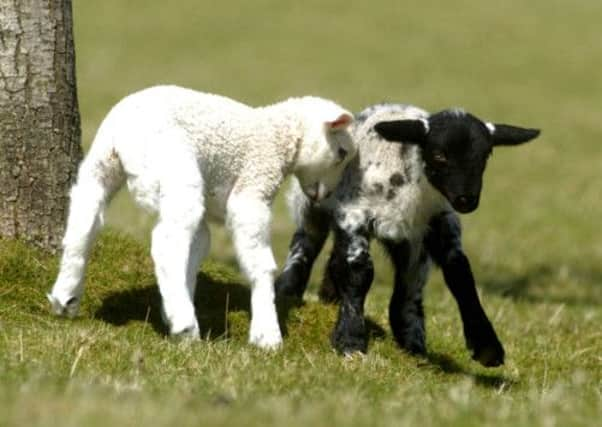Weather not the only factor as lamb crop set to tumble


It is not just the poor weather conditions which lasted into the start of April and hindered grass growth that mean forecasts are down eight per cent on last year’s crop, however.
While above average lamb losses have been reported in some regions as a direct result of the prolonged adverse weather, the decline began much earlier in the season, experts say.
Advertisement
Hide AdAdvertisement
Hide AdPaul Heyhoe, senior analyst for the Agriculture and Horticulture Development Board (AHDB) and EBLEX, the organisation for the English beef and sheep industry, said: “It has been clear for some time that the lambing rate would be lower, as the poor weather in 2012 and associated feed problems will have resulted in many ewes being in poor condition at tupping.
“Since then, there has been little opportunity for improvement and this will have impacted significantly on lambing rates even before the bad weather conditions earlier this year.
“At this level, the 2013 lamb crop would be the smallest in many years, as the low rearing rate is compounded by the fact the breeding flock is still around a third lower than it was in the 1990s.”
EBLEX and the AHDB have revised the lamb crop forecast down to 15.8 million head, 1.36 million lower than the estimated 2012 crop which it was expected to equal.
Advertisement
Hide AdAdvertisement
Hide AdThe downgrade comes despite a marginal increase in the breeding flock in December 2012, while the lamb rearing rate is expected to have fallen by 10 percentage points from the relatively high levels of last year.
Despite the anticipated fall in the lamb crop, overall slaughterings in 2013 are forecast to be three per cent higher than 2012 levels, as reduced new season lamb numbers are expected to be balanced by a significant carry-over of hoggets being slaughtered during the first half of this year, Mr Heyhoe said.
The impact of the low 2013 crop is likely to be felt during the second half of 2013 and the first half of 2014, with the lamb kill during this period projected to be seven per cent down year-on-year, provided the season is not further affected by adverse weather conditions.
Mr Heyhoe added that it was difficult to ascertain at this stage what impact this will have on supply in the longer term.
Advertisement
Hide AdAdvertisement
Hide AdIn what are challenging times, the National Sheep Association (NSA) has held talks with government officials in Scotland to discuss rising cases of animals infected by the liver fluke parasite which is particularly severe in sheep, causing weight loss and sometimes death when ingested at grazing. The NSA wants urgent research into new management options.